Where the techniques of Maths
are explained in simple terms.
Functions - Transformations.
Summary of shift and dilation transformations.
- Algebra & Number
- Calculus
- Financial Maths
- Functions & Quadratics
- Geometry
- Measurement
- Networks & Graphs
- Probability & Statistics
- Trigonometry
- Maths & beyond
- Index
The following is a summary of the strategies outlined in the video for transformations aiming at shifting and/or dilating curves.
| Vertical | Horizontal | |||
| Shifts | Replace y with y - V. | Replace x with x - H. | ||
| V is the constant by which the curve is moved vertically. |
H is the constant by which the curve is moved horizontally. |
|||
| V > 0: moves curve up. | H > 0: moves curve to right. | |||
| V < 0: moves curve down. | H < 0: moves curve to left. | |||
| Dilation | Replace y with |
Replace y with |
||
| V is the dilation factor from the x axis. | H is the dilation factor from the y axis | |||
| V > 1: curve expands up. | H > 1: curve expands out. | |||
| 0 < V < 1: curve contracts towards x axis. | 0 < H < 1: curve contracts towards y axis. | |||
| V < 0: curve flips around x-axis. | H < 0: curve flips around y-axis. | |||
The following table provides examples of transformations together with descriptions.
The f(x) is not the same across all examples do the basic shape is provided:
| Transformation | Equation | Graph |
| Horizontal shift: | y = x3 transformed to y = (x + 2)3. The +2 in the brackets moves the curve 2 units to the left. |
 |
| Vertical shift: | y = x3 transformed to y = x3 + 1
|
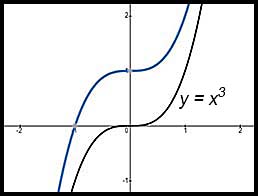 |
| Both shifts: | y = x2 transformed to y = (x - 1)2 - 3
|
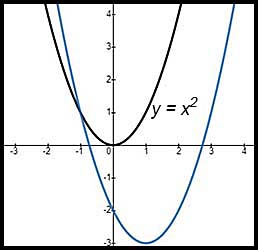 |
| Dilation | y = f(x) transformed to  . .
The 2 inside the function shows a horizontal dilation - or stretch - by a factor of 2. The point (-1, 0) becomes (-2, 0). |
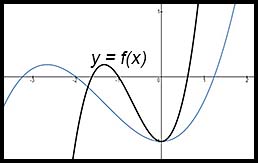 |
y = f(x) transformed to This transformation is equivalent to The 2 in front of f(x) indicates a vertical dilation (a stretch) by a factor of 2 - e.g. the y = -1 goes to y = -2. All y values are doubled. |
 |
|
| Mixtures | y = f(x) transformed to y = 1 - f(x):
|
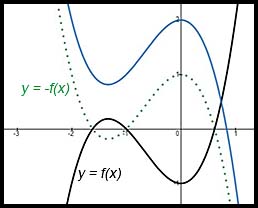 |
| y = f(x) is transformed into y = 1 - 2f(3x):
|
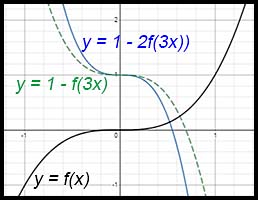 |
|
|